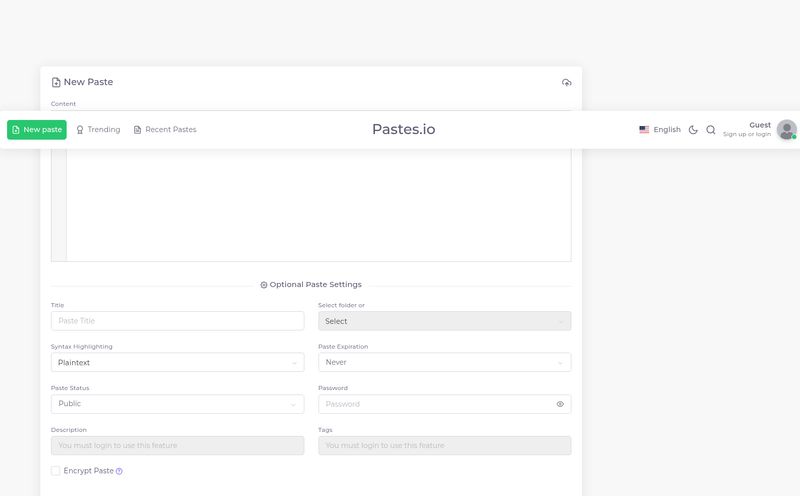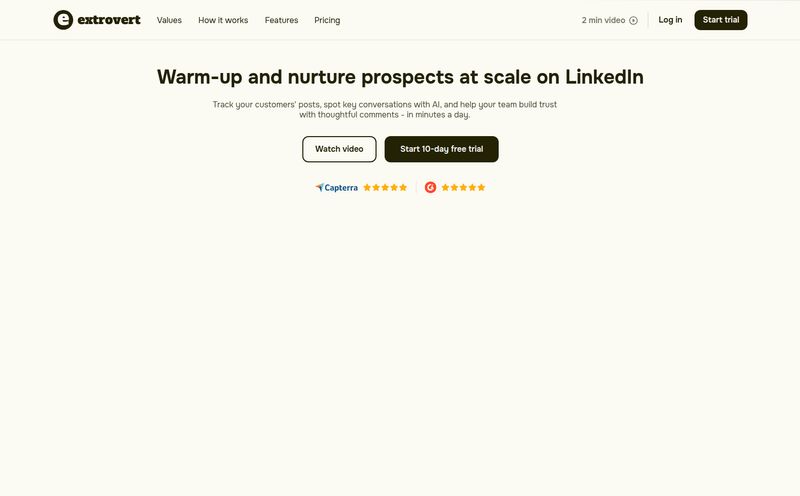We’ve all been there. You see a jacket online, it looks perfect on the model. You add to cart, wait impatiently for three to five business days, and the moment the package arrives, you rip it open with the excitement of a kid on Christmas morning. And then… disappointment. The fit is all wrong. The sleeves are too long, it’s tight across the shoulders, and it makes you look less like a style icon and more like a kid wearing your dad's clothes. Back in the box it goes.
This cycle of buy, try, and return is the unspoken nightmare of online fashion. It’s a pain for us, and it’s a logistical and financial black hole for brands. For years, we've been promised a solution. Augmented reality, sizing charts that require a PhD in geometry to understand, customer photos... none have really stuck the landing. But a new player, Avumi, just popped up on my radar, and I've got to say, my curiosity is piqued.
Their website is currently a sleek, minimalist “Launching Soon” page, but the promise is huge: a digital garment try-on experience powered by some serious tech. Could this finally be it? The tool that bridges the gap between the screen and the dressing room?
So, What Exactly is Avumi?
In the simplest terms, Avumi is building a platform that lets you virtually “try on” clothes before you buy them, right on a fashion brand’s website. Think of it as a super-intelligent digital dressing room. You show it what you look like, and it shows you how that specific dress, shirt, or pair of pants will likely fit on your body. Not a generic mannequin, not a six-foot-tall model—you.

Visit Avumi
This isn’t just about slapping a 2D image of a t-shirt onto a photo of yourself. The information I've managed to dig up suggests Avumi is using a sophisticated mix of AI, computer vision, and 3D algorithms. This trifecta is what could make it a genuine game-changer, moving beyond a simple gimmick into a genuinely useful tool for online shoppers.
How Does This Virtual Magic Actually Work?
Breaking down the tech is where things get interesting from a trends perspective. This isn't just one piece of software; it’s an ecosystem of technologies working together. It’s the kind of integration we’ve been seeing in other industries, now finally making a serious play for our closets.
The AI Brains Behind the Fit
At its core, there’s an Artificial Intelligence component. My guess is that the AI is the part that does the heavy lifting on fit prediction. It likely takes your body data—maybe from a few photos or a short video—and compares those measurements against the specific garment's technical specifications. It’s not just about height and weight; it’s about proportions, torso length, shoulder width. All the little details that make a medium size from Brand A fit completely differently from a medium at Brand B.
Computer Vision is a Fancy Term for 'Smart Eyes'
This is how the system “sees” you. Computer vision algorithms are trained to identify the human form, map out key points on your body, and create a digital model or avatar that accurately represents your shape. It’s the same kind of tech that allows your phone to put silly dog ears on your head in real-time, but instead of chasing laughs, it’s chasing an accurate fit. The quality here is everything. If the computer vision can’t create an accurate avatar, the whole experience falls apart.
3D Algorithms Make it Look Real
Here’s the part that truly separates next-gen tools from older attempts. Advanced 3D algorithms are responsible for rendering the garment on your digital self. This is about more than just size; it’s about drape. How does the silk blouse hang? Where do the pleats on the skirt fall? Does the denim bunch up at the knees? A good 3D engine simulates fabric properties, showing you not just if it will fit, but how it will look and move. This is the detail that can help a shopper decide if a piece truly suits their style.
The Real-World Impact for Shoppers and Brands
Okay, the tech is cool. But as an SEO and traffic guy, I’m always looking at the business case. What problem does this solve? Well, the big one is returns. The fashion industry’s return rate for online purchases is notoriously high—some reports put it as high as 30-40%. According to research from Shopify, the top reason for returns is wrong size or fit. Every single one of those returns costs a brand money in shipping, restocking, and potentially lost product. It’s a profit killer.
A tool like Avumi attacks that problem head-on. By giving customers more confidence in their size selection, it can dramatically reduce return rates. That’s an immediate ROI. But the benefits go deeper:
- Increased Engagement and Conversions: A virtual try-on is interactive. It keeps users on the product page longer. The more time and interaction, the higher the likelihood of a purchase. It’s classic Conversion Rate Optimization (CRO).
- Enhanced Customer Confidence: It removes the biggest point of friction in online clothes shopping: uncertainty. When you feel more certain, you're more likely to click “buy” and maybe even purchase more items.
- A Powerful Brand Differentiator: For now, this tech is still novel. The first brands to integrate it effectively will stand out as innovative and customer-focused. It's a massive marketing win.
Is It All Perfect? A Necessary Reality Check
Now, let's pump the brakes a little. I'm an optimist, but I'm also a realist. While the potential is huge, there are hurdles. This isn't the Star Trek holodeck… yet.
First, implementation is everything. Avumi needs to be integrated into a brand’s website. This means the brand has to provide high-quality 3D models of every single garment they want to offer for try-on. If the 3D models are sloppy, the experience will be too. Garbage in, garbage out.
Second, its accuracy will depend entirely on the quality of their AI and algorithms. We've all seen AI get things hilariously wrong. A small miscalculation could be the difference between a “perfect fit” recommendation and something that’s still two sizes too small. Building trust will be a slow process.
And finally, it can't replicate the feel of a garment. You can’t touch the cashmere, feel the stretch of the elastane, or judge the weight of the wool through a screen. That tactile experience is, for many, a huge part of shopping. A virtual try-on complements the online experience, it doesnt completely replace the physical one.
What About the Price Tag?
So, the million-dollar question: what does this cost? Right now, Avumi’s website just has a contact form on its “Launching Soon” page. There’s no pricing page, no tiers, no public information. That’s typical for a B2B SaaS platform in its early stages.
Based on my experience with similar enterprise-level tools, this won't be a cheap one-click Shopify plugin. I’d expect a tiered subscription model, likely priced based on website traffic, the number of SKUs enabled for try-on, or a combination of both. There will almost certainly be a setup or integration fee. This will be an investment for brands, but one that could pay for itself very quickly if it delivers on the promise of slashing return rates.
My Final Take: Is Avumi a Game-Changer or Just Hype?
Despite the unknowns, I’m genuinely excited. For years, the direct-to-consumer boom has been missing this crucial piece of the puzzle. We've optimized checkout flows, sped up websites, and personalized marketing to death, but we've barely touched the fundamental problem of fit.
Avumi is a signal that the technology is finally catching up to the ambition. It represents a move away from passive shopping towards an interactive, personalized, and more confident experience. It won't be perfect overnight, and early adopters will have to work through the kinks. But the potential to reshape customer behavior and improve the economics of online fashion is undeniable.
I’ll be keeping a close eye on Avumi. The real story here will be who signs on first. Will it be a luxury house looking to offer a premium digital service? Or a fast-fashion giant desperate to solve its massive returns problem? Either way, the digital dressing room is coming, and it’s about time.
Frequently Asked Questions about Avumi
- 1. What is Avumi?
- Avumi is a fashion technology platform that provides a virtual try-on experience for online shoppers. It uses a combination of AI, computer vision, and 3D rendering to show customers how clothes will fit their specific body shape before they buy.
- 2. Is Avumi available to use now?
- As of late 2023, Avumi's website indicates that the service is “Launching Soon.” It is not yet publicly available on any retail websites. You can sign up for their email list for updates.
- 3. How accurate is the virtual try-on?
- The accuracy will depend on the quality of Avumi's underlying technology and the 3D models provided by the fashion brands. The goal is to be highly accurate, but like any new tech, real-world performance will be the ultimate test.
- 4. Do I need special equipment to use Avumi?
- While not explicitly stated, platforms like this typically work with a standard webcam on a laptop or a smartphone camera. No special scanning hardware is usually required for the end-user.
- 5. Who is Avumi for: shoppers or brands?
- Both. It's a B2B (business-to-business) service that fashion brands integrate into their websites. The end-user or beneficiary is the online shopper, who gets a better, more confident shopping experience.
- 6. How will Avumi help reduce returns?
- By providing a realistic preview of how a garment will fit, Avumi aims to eliminate the guesswork involved in choosing a size online. This helps customers select the right size the first time, reducing the primary reason for fashion returns.
Reference and Sources
- The official Avumi website (for launch information): https://avumi.co/
- Statistics on e-commerce return rates from Shopify: Shopify Blog - The Plague of Ecommerce Returns
- An overview of technology in fashion from Vogue Business: Vogue Business - The State of Fashion: Technology



